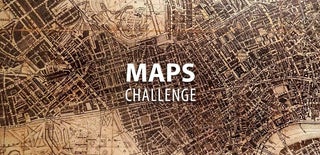Introduction: 4 Color Theorem
It may seem strange in a map challenge to start with the title of a mathematical theorem. But in reality it was precisely the coloring of a map that gave rise to the theorem.
In 1852, when Francis Guthrie, was working on coloring the map of the counties of England, he noticed that four colors were enough to color the map, on the condition that adjacent regions were not painted with the same color.
So he posed the problem: Four colors are enough to color any map in the plane with the condition that adjacent regions (that have a border line) are not colored with the same color.
Supplies
- colored pencil
- maps
Step 1: The Challenge
Try coloring any of the maps using 4 colors. Observing the rules:
- adjacent regions (that have a border line) are not colored with the same color.
Step 2: Coloring
Have fun
Step 3: Resources
You can use the different maps proposed or you can build your own maps.
Step 4: The End
For 124 years, many methods were developed to attack the demonstration of the Four Color Problem. Finally, in 1976, with the help of an IBM 360 in Illinois, Kenneth Appel and Wolfgang Haken presented a proof of the Four-Color Theorem.

Participated in the
Maps Challenge














